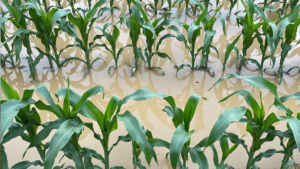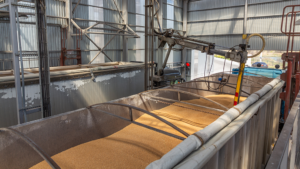Grain contracts guide
A RESOURCE FOR GRAIN SELLERS AND BUYERS

A “THUMBS UP” IN a text message in response to a grain contract proposal cost a Saskatchewan farmer $82,000 after a Saskatchewan judge ruled in June 2023 that replying with the commonly used emoji constituted a legal contract.
In this particular case, the farmer had a longstanding relationship with the buyer and regularly used text messages to agree to contract terms. When the grain was not delivered as per the contract, the buyer took the issue to court.
In the summary judgment, the judge wrote, “This court readily acknowledges that a [thumbs up] emoji is a non-traditional means to “sign” a document, but nevertheless, under these circumstances, this was a valid way to convey the two purposes of a “signature” — to identify the signator — [the farmer] using his unique cell phone number — and … to convey [the farmer’s] acceptance of the flax contract.”
This story caught the attention of news media, farmers, and the agriculture and legal community around the world, including Rachel Telford, Grain Farmers of Ontario’s manager of member relations.
Telford had already been developing a Grain Contracts Guide, a document designed to help Ontario’s grain farmers better understand the grain contracting process and the rights and responsibilities of both sellers and buyers. The Saskatchewan judgment drove home how necessary it was for everyone to be on the same page when contracting grain.
“Verbal agreements are standard practice in Ontario, but just like a brief text message, they can leave room for ambiguity,” she says. “A phone call should always be followed by written confirmation of what you have agreed to deliver.”
WHAT IS IN THE GUIDE?
Released in October 2023, the Grain Farmers of Ontario Grain Contracts Guide is a comprehensive document that helps farmers understand grain contracts and specific issues, including:
- Variations in grain quality
- Canada’s grain integrity
- Delivery terms
- Access to land
- Defaults and contract cancellation
- Set-offs and security
- Farmer compensation
- Financial protection for farmers
- Contract disputes
The guide also includes information on additional resources, including the Grain Financial Protection Program Producer Guide and the Canadian Grain Commission’s Declaration of eligibility for delivery of grain. Grain Farmers of Ontario has also worked with the Ontario Agri Business Association and the Ontario Canola Growers to develop the Code of Practice for the trade in barley, corn, canola, oats, and wheat in Ontario to help farmers understand the process for dealing with any quality disputes. The sale of soybeans is governed by the 2016 Soybean Marketing Agreement established under the authority of the Farm Products Marketing Act.
The guide was adapted, with permission, from the Canadian Canola Growers Association’s A Practical Guide to Navigating Grain Contracts, fourth edition, and is modified to reflect regional differences in grain marketing practices and the provincial regulations that provide safeguards and oversight to Ontario’s grain industry.
“The bottom line is — read your entire contract,” says Telford. “If you don’t read your contract, there may be terms and conditions you aren’t aware of until there is a problem at delivery. Knowing your obligations and responsibilities, as well as your rights, can help maintain a good relationship and foster open communication with your grain buyer.”
The guide is available online at www.gfo.ca/marketing. •























